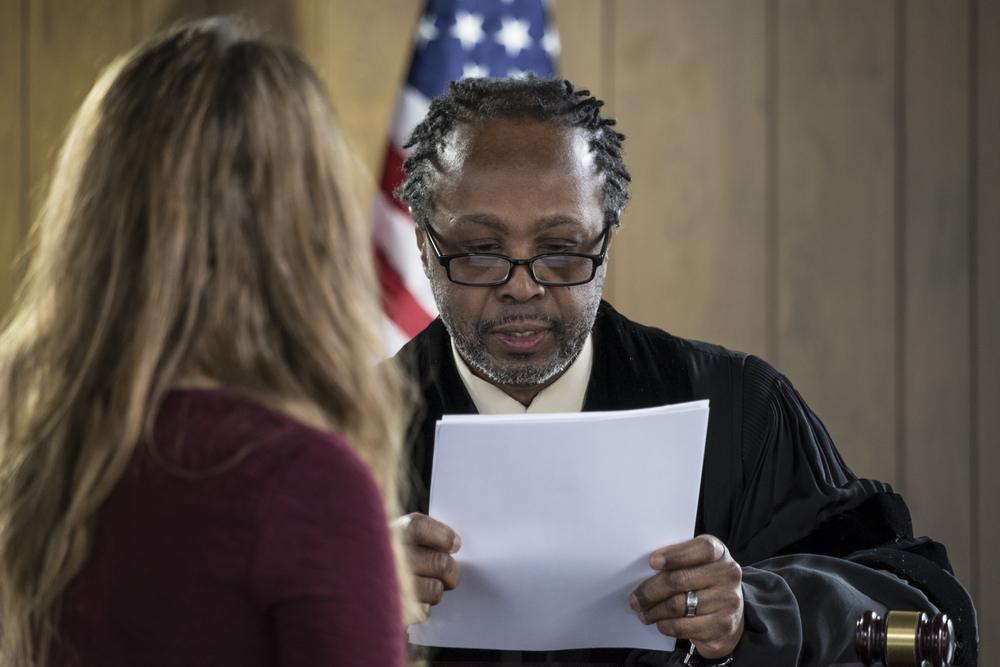
How To Get Your Name Off of a Bail Bond in 2024
Written on March 8, 2024. Posted In Bail
When you agree to be a cosigner for a bail bond, you take on a role filled with trust and significant financial and legal obligations. Over time, changes in your life or concerns about the defendant’s behavior might lead you to consider withdrawing from this commitment. Understanding the complexities and emotional strain this decision entails is crucial. This guide is designed to provide you with a thorough understanding and actionable strategies to help you approach the process of removing your name from a bail bond with confidence and clarity.
Understanding Bail Bonds: A Quick Overview
Bail bonds serve as a financial arrangement that allows defendants temporary freedom until their court date, under the condition that they will return for their trial. As a cosigner, you provide a guarantee to the bail bond agency and the court that the defendant will adhere to these terms. This role is not without its risks; should the defendant fail to comply, you could be facing considerable financial obligations.
Why You Might Want To Be Removed as a Cosigner
The decision to step back from your role as a cosigner can stem from various reasons, ranging from a change in your financial landscape to concerns over the defendant’s commitment to their legal responsibilities. It’s a decision that carries weight and one that requires a thoughtful approach to ensure it’s handled correctly.
Step-by-Step Guide: How To Get Your Name Off of Someone’s Bail Bond
1. Review Your Bail Bond Agreement
Start with a thorough review of your bail bond agreement. This document is key to understanding your rights and the specific conditions under which you can request to be released as a cosigner. Pay close attention to any clauses that detail the process for cosigner release, as these will guide your next steps.
2. Communicate with the Bail Bond Agency
Initiating a conversation with the bail bond agency is a critical next step. Approach this discussion with clarity and a sense of purpose, explaining your situation and the reasons for your request. Remember, the agency’s policies on cosigner release can vary, so it’s crucial to understand their specific requirements and procedures.
3. Consult with a Legal Professional
The complexities of bail bond agreements often necessitate legal guidance. Consulting with a lawyer who specializes in this field can offer invaluable insights into your situation, helping you navigate the process with an informed perspective. They can also assist in drafting any necessary legal documents and represent your interests effectively.
4. Fulfill the Bail Bond Conditions
Demonstrating that the defendant has met all conditions of their bail can significantly bolster your case for release as a cosigner. This includes ensuring they attend all court dates and adhere to any additional requirements set by the court. Your proactive involvement in this aspect can be a decisive factor in your request for release.
5. File a Petition with the Court
For some, the journey to release may involve petitioning the court directly. This formal step requires preparing a compelling argument for your release, backed by evidence and possibly legal representation. While challenging, this route offers a clear, albeit complex, path to resolving your cosigner obligations.
Alternatives to Getting Your Name Off a Bail Bond
If removal as a cosigner is not feasible, other avenues may be worth exploring:
- Transfer of Cosignership: One option is to find someone willing to take over your cosigner responsibilities. This person must understand the obligations involved and agree to accept the financial risks. It’s a significant request, requiring trust and transparency.
- Negotiating with the Bail Bond Agency: Some agencies might be open to negotiation, especially if the defendant has shown a track record of compliance. Discussing alternative arrangements, such as a payment plan or additional security, might persuade them to release you from the agreement.
- Refinancing the Bail Bond: In certain cases, the bail bond itself can be refinanced or restructured under new terms that no longer require your involvement as a cosigner. This might involve the defendant finding alternative means of securing the bond.
Tips for Avoiding Future Bail Bond Complications
To safeguard against future entanglements with bail bonds, consider these strategies:
- Thoroughly Vet the Defendant: Before agreeing to cosign, deeply assess the defendant’s reliability and commitment to fulfilling their court obligations. Consider their history, relationship to you, and any potential red flags.
- Understand the Full Scope of Responsibility: Fully grasp what cosigning entails, including the potential for financial liability and the steps involved if the defendant fails to comply with bail conditions.
- Seek Legal Advice Before Signing: Consulting with a legal professional can provide clarity and foresight, helping you understand the implications of cosigning a bail bond.
- Set Clear Expectations with the Defendant: If you decide to cosign, have an open and honest discussion with the defendant about your expectations and the seriousness of the situation. Establishing clear communication can mitigate misunderstandings and encourage compliance.
Taking Control of Your Bail Bond Situation
With a deeper understanding of how to remove your name from a bail bond, along with knowledge of the alternatives and preventive measures for future situations, you’re equipped to address this challenge effectively. The process of being removed as a cosigner involves navigating legal and financial considerations, but with the right approach and support, it can lead to a resolution that protects your interests.
For those in need of further guidance, Free at Last is here to assist. Our commitment to offering knowledgeable, compassionate support can help you navigate the complexities of bail bonds, empowering you to make informed decisions.
Visit Free at Last for more information and assistance with managing your bail bond concerns. Let us help you find the path to freedom and peace of mind during these challenging times.

